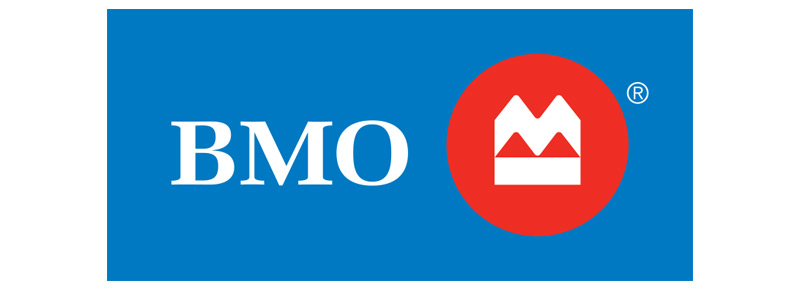2020 Vision – What the Next Decade Holds for Marketers
10 years ago the Financial Post interviewed advertising leaders including myself to share our thoughts on what the decade ahead would hold for marketers. As it turns out we did a reasonably good job guessing what lay ahead. Inspired by that article here are a few thoughts on what the next decade holds for marketers from a few of the same folks who originally contributed.
Death to the Middle
We live in an increasingly polarized world (think the last two US presidents, the last two Toronto mayors, or the way public sentiment can swing quickly in the case of Don Cherry). For brands who have embarked on decades of unbridled brand extensions there is a big washout coming. Consider the typical grocery aisle with dozens of barely distinguishable CPG products. Consumers will also continue to be more polarized. At one end, they will demand the lowest commoditized price fueled by Google, Amazon, private labels and ever shrinking consumer choices via voice search. On the other end there continues to be a demand for the ‘best’ brand and best quality and consumers will pay a premium for this. The middle will get purged.
- Proof in Point: Look at a dollar store and see if you notice a luxury car in the parking lot. An illustration of the low cost and high-quality dichotomy rolled into one consumer.
Mattering will Matter More.
Brands can however ‘insure’ themselves against the washout of the middle. Brands that create a unique meaning beyond just price and high quality can matter to consumers and elevate above the polarity above. Brands that stand for something that aligns with consumer values (CSR, social equity, environmental issues, etc.) can insulate themselves against this polarization. As a former business partner Adam Oliveira asserts, triple bottom line measurement (profit, people, planet) will take greater importance.
- Proof in Point: Direct to consumer brands in categories like shoes, glasses, apparel, mattresses etc, can completely disrupt and win in a matter of years. They often have a unique value proposition aligned with their ideal consumers.
Connecting the Dots
The expectations for a converged, cohesive and coherent consumer experience is more and more critical. The irony is that the ability to execute this is harder and harder. As brands reinvent, rebrand and innovate what they stand for, it is critical to ensure that the myriad of touchpoints are interconnected between marketing, operations and sales.
- Impact to Marketers: Impact to Marketers: The triad of “say, sell and deliver” needs to be interconnected and work together across advertising, sales and employees to sing a harmonious tune.
I’ll Take One Please
This one comes from former business partner Allison Laux. Marketers will take greater advantage of the increasing number of singles in our population. The single-serve world fueled by the experiences of streaming music, ‘TV’ shows and hyper-individualized digital customer experiences has created and perpetuates this. In the decade ahead we’ll see greater attention on the solo focused economy with small urban living spaces, smaller cars, single-serving meals and the rethinking of ownership vs the sharing economy. Brands that figure out how to transform their business and cater to this one itty bit at a time can win.
- Proof in Point: Alibaba has hit it big with ‘singles day’. This is not an isolated example and quickly shows the power of catering to this growing demographic.
Age of Un-Trust
The major digital platforms have driven unimaginable innovation. They are woven into the fabric of our daily lives, but they are at a crossroads. Their connectedness to culture and life have become challenges in the areas of politics, commerce, media, information and trust. Whether facing antitrust investigations or quickly changing public sentiment these platforms are under greater scrutiny than ever. History shows that companies facing antitrust actions can survive and thrive, so these major digital platforms are not going away, but their dominance will wane. They can no longer take consumer trust and acceptance for granted and that means that advertisers will feel the same.
- Impact to Marketers: The opportunity for marketers to invest and grow beyond the few big digital platforms presents a real opportunity. Investments in platforms like SNAP, Spotify and Pinterest are still relatively small and every few years a new player with momentum like TikTok will emerge as opportunities for brands to create a unique connection to their audience.
High Touch vs. High Tech
“High touch” will take a bigger role. On the consumer side, there’s a resurgence in the novelty of brand experiences from the past. Think live events, traditional retail, etc. For example, my 14-year-old son thinks the idea of a movie rental store is cool?! There is a premium to physicality that will grow in importance.
- Proof in Point: OOH advertising is the only traditional media that continues to see significant innovation (DooH, mobile connectivity, etc) and brand dollars continue to flow into this medium.
“High-touch” inside organizations may look like an increased importance of intuition, strategic insight and creativity. This part is inspired by Adam Oliveira. Limitations on data over collection coupled with AI automating many of the data abundant roles could ironically level the data playing field. This will upend and transform many businesses. Interestingly it will also mean that over time many businesses will operate at a data automated state closer to parity.
- Impact for Marketers: Over time this will be a catalyst for an increased focus on “internal high touch” with strategic insight and creative differentiation leading the way to find the X-factor and stand out from the competitive set.



































